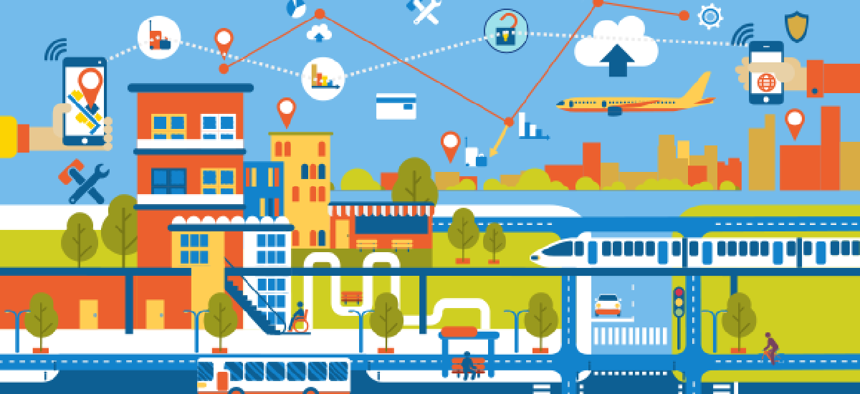How smart cities gain traction

The ability to manage citizen expectations and bridge the digital divide are key to integrating smart city pilot programs into new communities, experts say.
The challenges of integrating new technology into public-sector solutions and bridging the digital divide were the hot-button issues during a July 13 expert panel on smart cities.
“When technology moves at a pace that the government is not going to move … we are most certainly going to be leaving people behind,” Jeremy Goldberg, Microsoft’s director of Critical infrastructure, said during the virtual even hosted by Protocol.
Blending emerging technologies with the existing infrastructure is the key to sustainably expanding the scope of what smart cities can do, Goldberg said. The panelists largely agreed with the notion that it is not the technology that defines the smart city solution, but the way in which its features can be incorporated into a built environment and how intuitive it is for the public to use.
Establishing trust with communities on smart city pilot programs is also critical for successful integration of new technology, said Jordan Davis, executive director of Smart Columbus, the smart mobility-based initiative funded by the city’s winning of the Department of Transportation’s 2016 Smart City Challenge. Any failure to deliver on residents’ expectations can have a detrimental impact, she said.
One of the strategies Columbus used to build trust was to start small.
“Emerging technology has a lot of broken promises in history,” Davis said, so the city started out with “a very low-risk use case.” The team used public and private funding to run an autonomous shuttles pilot that provided free rides to museums so both the city and residents could learn how well the technology worked.
Despite the problems that were surfaced in that pilot, Davis’ Smart Columbus innovation lab was able to expand the project to a larger neighborhood and still balance performance expectations.
Because smart cities depend on high-speed connectivity, the importance of access to reliable broadband is key to success. However, gaps in digital connectivity have been amplified by the pandemic and highlighted the need for equity, panelists said. Lower income families and those in areas with inadequate broadband infrastructure often had to rely on Wi-Fi hotspots at local businesses to for children to complete school work.
“Ensuring every resident has access to the internet, that's the important, human-centered way of communicating the connectivity value,” Davis said. “Digitalization, which is a slightly different take on connectivity, is really the modernization of the community experience.”





